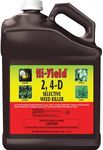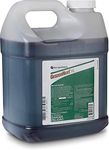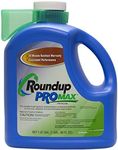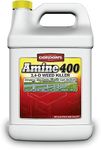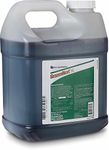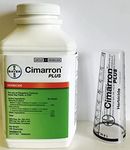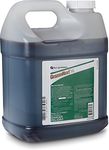Buying Guide for the Best Herbicide For Pastures
Choosing the right herbicide for your pastures is crucial for maintaining healthy and productive land. The right herbicide will help you control unwanted weeds and invasive plants without harming the desirable grasses and forage plants. To make an informed decision, you need to consider several key specifications and understand how they align with your specific needs and conditions. Here are the key specs to consider when selecting a herbicide for pastures.Active IngredientThe active ingredient is the chemical component that targets and kills the weeds. It is important because different active ingredients are effective against different types of weeds. For example, some active ingredients are better for broadleaf weeds, while others target grassy weeds. To choose the right one, identify the types of weeds you need to control in your pasture and select a herbicide with an active ingredient that is effective against those specific weeds.
SelectivitySelectivity refers to the herbicide's ability to target specific weeds without harming desirable plants. This is important because you want to eliminate the weeds while preserving the pasture grasses. Herbicides can be selective (targeting specific weeds) or non-selective (killing all plants). For pastures, a selective herbicide is usually preferred to protect the forage plants. Choose a herbicide that is selective for the weeds you need to control and safe for the grasses in your pasture.
Residual ActivityResidual activity is the length of time the herbicide remains active in the soil after application. This is important because it affects how long the herbicide will continue to control weeds. Herbicides with long residual activity can provide extended weed control, but they may also affect future planting. Short residual activity means the herbicide breaks down quickly, which can be safer for the environment and future crops. Consider your pasture management plan and choose a herbicide with a residual activity that fits your needs.
Application TimingApplication timing refers to the best time to apply the herbicide for maximum effectiveness. This is important because applying herbicides at the wrong time can reduce their effectiveness and potentially harm desirable plants. Herbicides can be pre-emergent (applied before weeds germinate) or post-emergent (applied after weeds have emerged). Determine the growth stage of the weeds in your pasture and choose a herbicide with the appropriate application timing.
Mode of ActionThe mode of action is how the herbicide affects the weed at the biochemical or physiological level. This is important because using herbicides with different modes of action can help prevent weed resistance. Herbicides can work by inhibiting photosynthesis, disrupting cell division, or other mechanisms. Rotate herbicides with different modes of action to manage resistance and maintain effective weed control in your pastures.
Environmental ImpactThe environmental impact of a herbicide includes its potential effects on soil, water, non-target plants, and wildlife. This is important because you want to minimize any negative effects on the environment while controlling weeds. Look for herbicides that are labeled as environmentally friendly or have low toxicity to non-target organisms. Consider the specific conditions of your pasture and choose a herbicide that balances effective weed control with minimal environmental impact.

